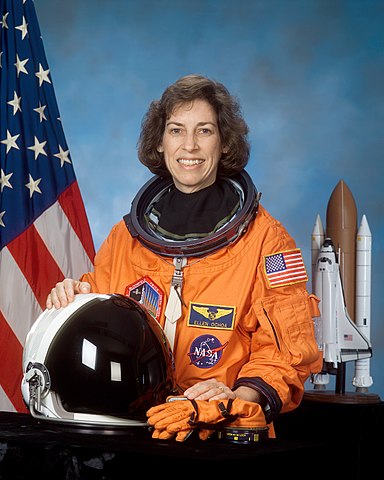
Space History for May 10
If you are not already a subscriber, you are welcome to enter your email address here to sign up to receive the Space History newsletter on a daily basis. Under no circumstances will we release your legitimate email address entered here to outside persons or organizations, and it will only be used for mailing the specific information you have requested.
| Enter your email address here: |
Unsubscribe instructions are included in every newsletter issue in case you decide you no longer wish to receive it.
Note: We record the IP address from which subscriptions are entered to help prevent SPAM abuses.
Race To Space
Someone will win the prize...
... but at what cost?
Visit RaceToSpaceProject.com
to find out more!
1752
The first tests confirming Benjamin Franklin's lightning rod concepts were made as a thunderstorm passed over the French village of Marly-la-Ville, drawing sparks from a tall iron rod that had been carefully insulated from the ground.
ref: pabook2.libraries.psu.edu
1788
Born, Augustin-Jean Fresnel, optics pioneer, physicist
ref: en.wikipedia.org
1829
Died, Thomas Young, British polymath, physician (wave theory of light)
ref: en.wikipedia.org
1869
A golden spike was driven at Promontory Summit, Utah, to mark the completion of the first transcontinental railroad in the United States.
The Union Pacific Railroad Company extended the American railroad, building 1006 miles westward from Omaha, Nebraska, to meet the Central Pacific Railroad's line, being built from Sacramento, California. The two lines met at Promontory Summit, Utah on 10 May 1869. On that day, a golden spike was driven by Leland Stanford, president of the Central Pacific, to celebrate the linkage. This was a very important part (1800 miles) of the first American transcontinental railway line, which made possible much of the United States' growth, which led, in turn, to the US dominance of space travel in the latter half of the twentieth century.
ref: www.nps.gov
1879
A meteor notably fell on the Lee Farm near Estherville, Iowa, the largest meteorite known to have fallen in North America during recorded history.
ref: www.iowagold.com
1919
Born, Magnus Freiherr von Braun, German rocket engineer, brother of Werner von Braun, member of the German Rocket Team in the United States after World War II
ref: en.wikipedia.org
1920
Died, John Wesley Hyatt, mainly known for simplifying the production of celluloid, the first industrial plastic
ref: en.wikipedia.org
1924
K. Reinmuth discovered asteroid #1044 Teutonia.
1932
J. Hartmann discovered asteroid #1254 Erfordia.
1934
H. Van Gent discovered asteroid #1753 Mieke.
1958
Born, Ellen Ochoa, PhD (at Los Angles, California, USA), NASA astronaut (STS 56, STS 66, STS 96, STS 110; over 40d 19.5h total time in spaceflight), 11th director of the Johnson Space Center

Astronaut Ellen Ochoa, NASA photo (12 February 2002)
Source: Wikipedia (spaceflight.nasa.gov killed 25 Feb 2021)
ref: en.wikipedia.org
1960
The nuclear submarine USS Triton completed the first underwater circumnavigation of the Earth, a mission which took 84 days.
ref: en.wikipedia.org
1967
C. U. Cesco and A. R. Klemol discovered asteroid #1770 Schlesinger.
1971 16:58:42 GMT
USSR launched Cosmos 419, intended to be the first Mars orbiter. However, it never left Earth orbit.
Cosmos 419, launched 10 May 1971, was intended to be a Mars orbiting mission. It is widely believed this spacecraft was launched with the primary purpose of overtaking Mariner 8, which had been launched (unsuccessfully, as it turned out) two days earlier, and becoming the first Mars orbiter. The spacecraft was presumably similar to the orbiter section of the later Mars 2 mission, a cylindrical shaped spacecraft 3 meters high with two solar panels extending from the sides, two large dish antennae, on top of retro-rockets and fuel tanks. It carried an instrument to measure solar radiation which was supplied by the French.
The SL-12/D-1-e Proton booster successfully put the spacecraft into low (174 km x 159 km) Earth parking orbit with an inclination of 51.4 degrees, but the Block D stage 4 failed to function due to a bad ignition timer setting (the timer, which was supposed to start ignition 1.5 hours after orbit was erroneously set for 1.5 years.) The orbit decayed and the spacecraft re-entered Earth's atmosphere 2 days later on 12 May 1971. The mission was designated Cosmos 419.
Beginning in 1962, the name Cosmos was given to Soviet spacecraft which remained in Earth orbit, regardless of whether that was their intended final destination. The designation of this mission as an intended planetary probe is based on evidence from Soviet and non-Soviet sources and historical documents. Typically, Soviet planetary missions were initially put into an Earth parking orbit as a launch platform with a rocket engine and attached probe. The probes were then launched toward their targets with an engine burn with a duration of roughly 4 minutes. If the engine misfired or the burn was not completed, the probes would be left in Earth orbit and given a Cosmos designation.
ref: nssdc.gsfc.nasa.gov
1980
A. Mrkos discoverd asteroid #2811.
1993
Died, Lester del Rey, US science fiction author and publisher
ref: en.wikipedia.org
1994
An annular eclipse of the sun was visible over North Africa and the USA. (6 minutes 13 seconds)
ref: en.wikipedia.org
We are going to run out of oil!
Visit SpacePowerNow.org
to help fix the problem.
SpacePowerNow.org - For Human Survival
Please help support our efforts by shopping from our sponsors.
This newsletter and its contents are Copyright © 2006-2025 by The L5 Development Group. All rights reserved. - Publication, in part or in whole, requires previous written permission. - Academic or personal-use citations must refer to http://L5DGbeta.com as their source. Thank you for your cooperation.





